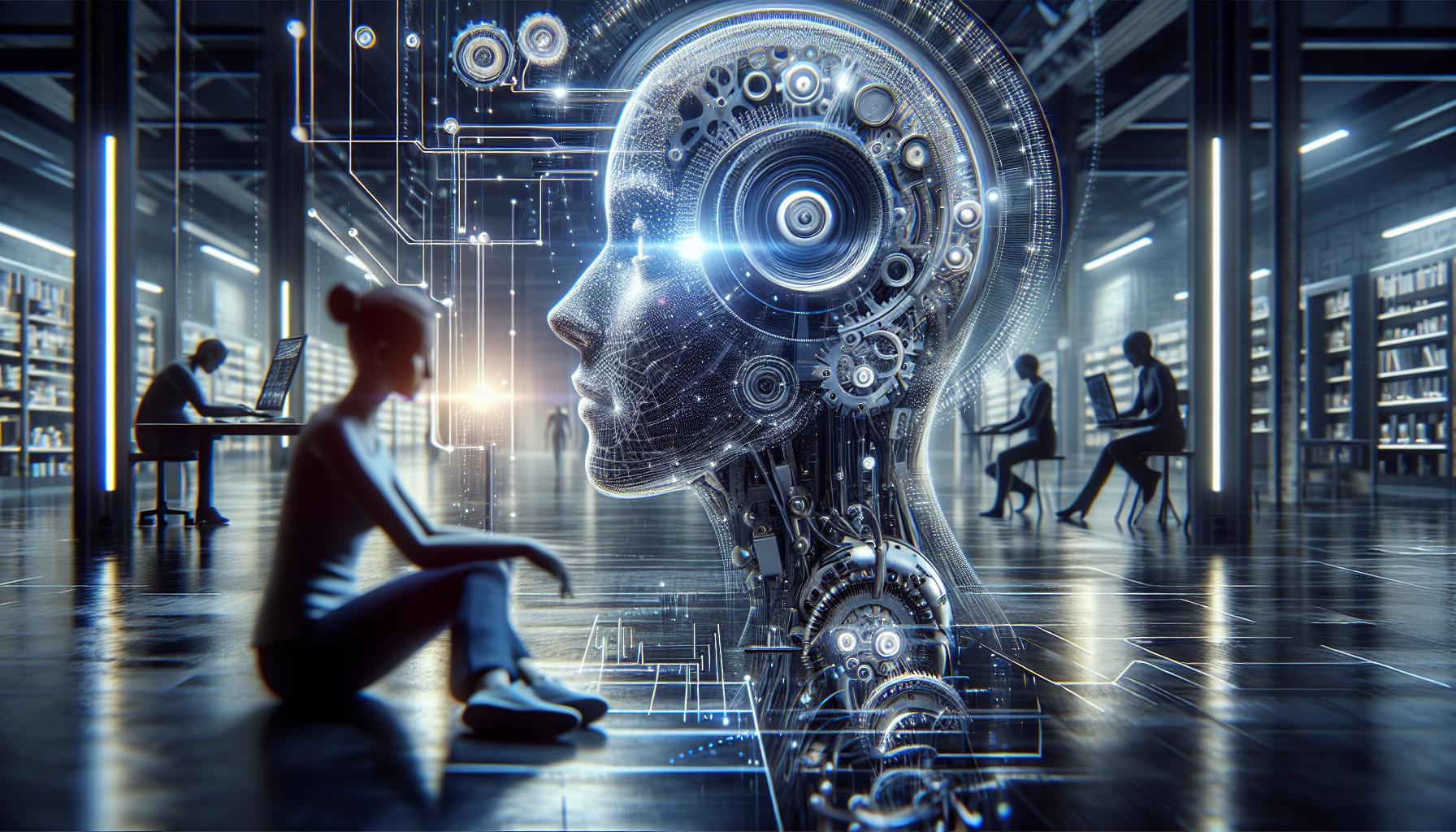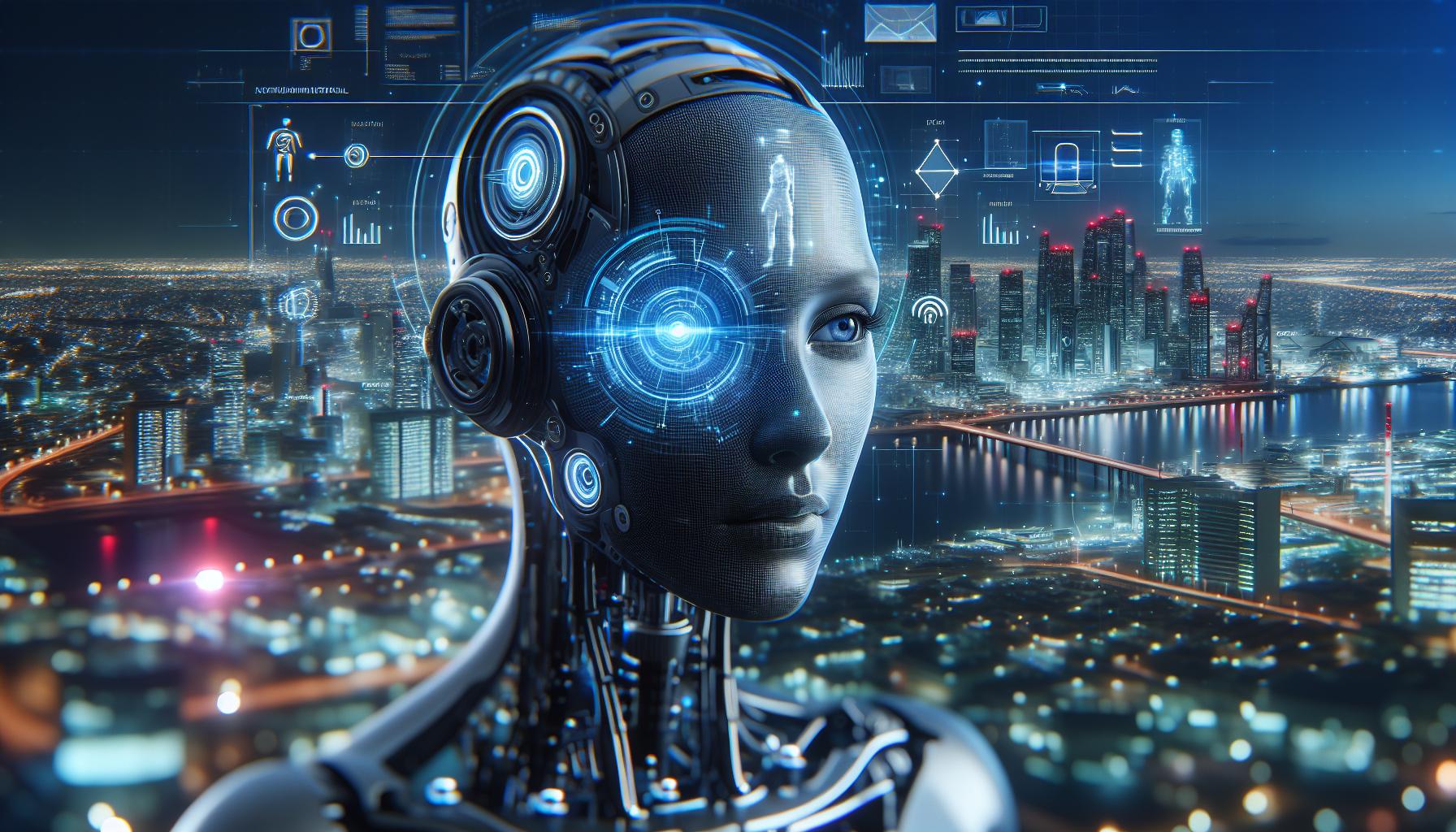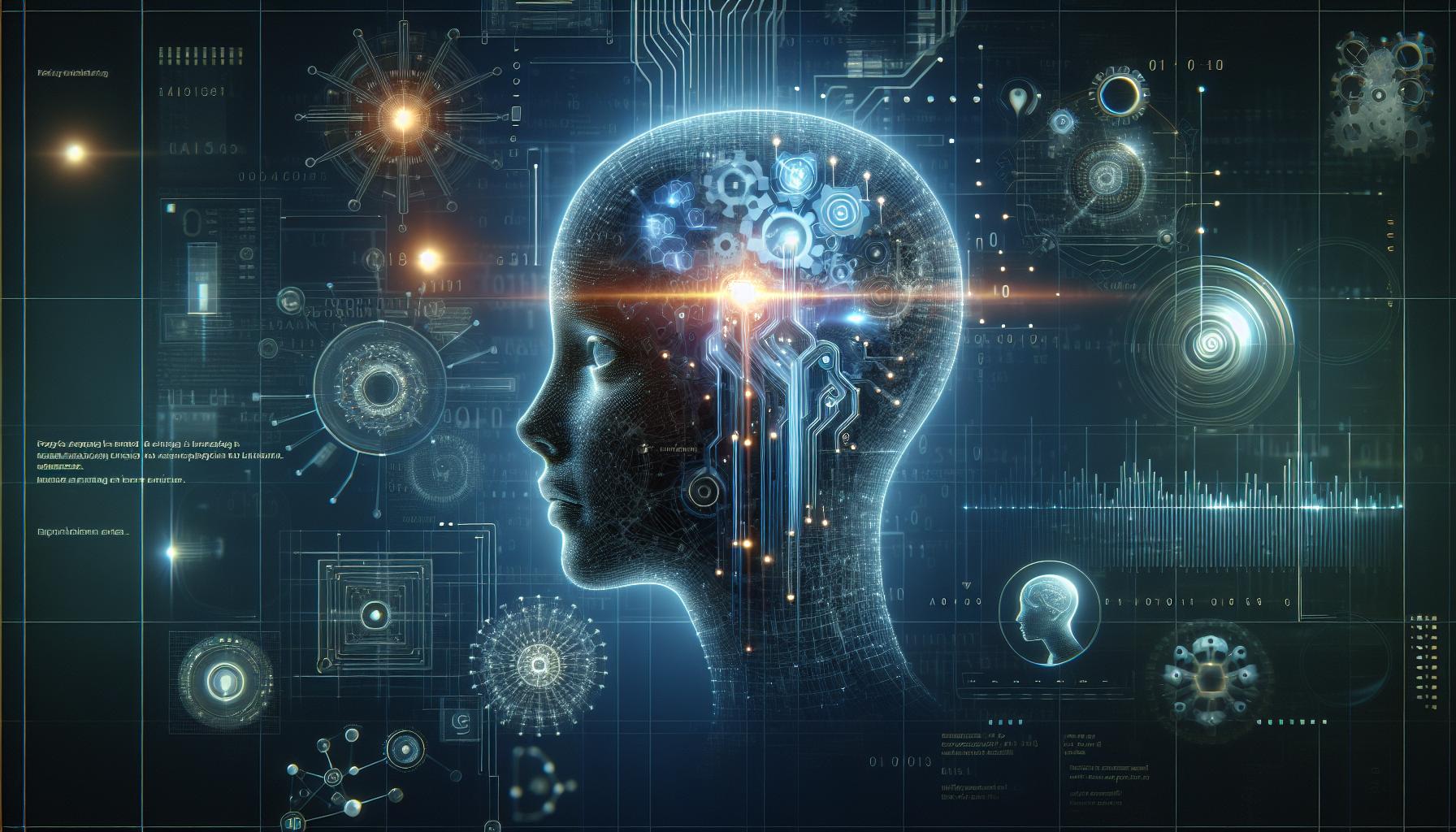Can technology truly penetrate layers of fabric, or is it merely a figment of our inventiveness? As artificial intelligence continues to advance, misconceptions about it’s capabilities abound. This article aims to clarify the myths and facts surrounding AI’s ability to see through clothing, shedding light on its implications in privacy and ethics in our tech-driven society.
Understanding AI Imaging Technologies: How They Work
Exploring the Mechanics of AI Imaging
In the realm of modern technology, artificial intelligence (AI) is reshaping how we capture and interpret visual data. One of the most fascinating aspects of this evolution is AI imaging technologies, which leverage complex algorithms to analyze and reconstruct visual facts. This technology can process vast amounts of data at remarkable speeds, allowing it to identify patterns and features that may not be immediately visible to the human eye. But how exactly does this technology work, and can it be used to perceive objects obscured by clothing?
At the core of AI imaging is a methodology known as machine learning, a subset of AI were algorithms learn from data inputs. Here’s a brief overview of how these systems operate:
- Data Collection: AI imaging requires extensive datasets, frequently enough comprising thousands of images. These images can range from everyday objects to human forms, and they serve as the foundational knowledge for the algorithms.
- Training the Model: During the training phase, the AI system processes these images to detect features through various layers of neural networks. Each layer extracts increasingly abstract characteristics, enabling the model to distinguish between different objects and their properties.
- testing and Validation: After training, the model is tested with new images to validate its accuracy. This step is crucial as it ensures the AI can generalize its learnings to unseen data.
- Deployment: Once validated, the AI model can be deployed in real-world applications, where it analyzes images in real-time, offering insights and conclusions based on its training.
Can AI Really See Through Clothes?
Despite impressive advancements, the notion that AI can “see through clothes” is more myth than reality. AI systems are primarily designed to analyze surface features and textures, making them adept at identifying clothing patterns but not capable of penetrating physical barriers like fabric.Instead of literal visualization, AI utilizes indirect methods, such as thermal imaging or radio-wave technology, to assess outlines and shapes beneath clothing. The legal and ethical implications are meaningful, as privacy concerns rise with such capabilities.
A table illustrating the key distinctions between customary imaging techniques and AI-powered imaging can clarify this further:
| Technique | Description | Submission |
|---|---|---|
| Traditional Imaging | Captures visible light reflections from surfaces. | Photography, standard medical imaging. |
| Thermal Imaging | Uses infrared radiation to detect heat signatures. | Night vision, surveillance, healthcare diagnostics. |
| AI Imaging | Analyzes a combination of data points to identify patterns. | Face recognition, object detection, augmented reality. |
Understanding these underlying technologies not only demystifies the capabilities of AI imaging but also fosters an informed dialog about its application and limitations. Although AI is a powerful tool for visual analysis,its potential for misuse necessitates careful consideration of ethical standards to ensure responsible usage.
The Science Behind Clothing Transparency: Can AI Really See?
The advent of artificial intelligence has sparked a whirlwind of debates and speculations surrounding its capabilities, particularly in visual recognition technology. One of the most provocative questions to emerge is whether AI can actually “see” through clothes. Despite the sensational headlines, the reality is grounded in scientific principles and technical limitations of current AI systems.
Understanding Image Processing
At the core of AI’s visual capabilities lies image processing, which involves how software analyzes and interprets visual data. Typically, AI systems utilize neural networks trained on vast datasets to recognize patterns and make predictions. however, detecting objects beyond layers of fabric poses significant challenges. Key limitations include:
- Material obscurance: Clothing is constructed of varied materials that can obscure the underlying shapes and colors, making it tough for AI to discern what’s beneath.
- Depth Perception: AI requires refined depth perception to differentiate between surfaces, which remains a complex task when dealing with layered textiles.
- Ethical Constraints: Even advancements in AI technology have led to ethical discussions surrounding privacy and consent, further hampering the pursuit of any ability to “see” through clothing.
Real-World Applications of Visual Recognition
Current AI applications for visual recognition are more oriented towards enhancing security,improving shopping experiences,and aiding in medical diagnostics rather than infringing on personal privacy.For example:
| Application | Description |
|---|---|
| Retail Analytics | AI analyzes customer behavior and clothing fit, helping retailers optimize inventory. |
| Medical Imaging | AI assists in identifying potential health issues through non-intrusive imaging techniques. |
| Security Surveillance | Sophisticated algorithms monitor surveillance footage to detect unusual activities. |
These applications exemplify how AI effectively interacts with images and data, but they do not extend to an intrusive capability of “seeing through” clothing. Understanding these limitations is paramount in debunking the myths surrounding the idea of AI transparency.
while the potential applications of AI in image processing are vast, the notion that it can see through clothing remains a misconception. The blend of ethical considerations, technical limitations, and practical applications frames a clearer picture of what AI technology can accomplish today.
Myth vs.Reality: Debunking Common Misconceptions About AI Capabilities
With the rapid development of artificial intelligence (AI),public perceptions are often clouded by sensational representations in media and pop culture. One of the most dramatic examples is the belief that AI can see through clothing, a concept that straddles the line between fiction and reality. Let’s delve into the common misconceptions surrounding AI capabilities, dismantling myths while shedding light on the actual advancements and limitations of this technology.
Misconceptions About AI’s Perceptual Abilities
Despite the growing prevalence of AI in various sectors, the idea that machines possess the capability to “see” through clothing is fundamentally flawed. Below are prevalent myths contrasted with the reality:
- Myth 1: AI can visually penetrate materials like clothing.
- Reality: AI primarily analyzes data and patterns, relying on visual inputs similar to human eyesight but lacking any physical ability to perceive beyond surfaces.
- Myth 2: All AI models utilize advanced imaging techniques that can extract hidden information.
- Reality: Most AI applications focus on data classification and recognition (e.g., facial recognition), which do not include the ability to “see” through objects.
Understanding the Limits of AI Technology
While research continues in areas like computer vision and deep learning, the current implementations of AI technology do not support the ability to see through opaque materials. For instance, while some AI programs can analyze X-ray images for medical diagnostics or security screening, they do so within a regulated surroundings with specific imaging techniques—not by simply “seeing through” standard clothing.
| Aspect | Myth | Reality |
|---|---|---|
| Data Analysis | AI can deduce hidden features under clothing. | AI interprets surface data only, no penetration. |
| Legal Implications | AI can be used freely for surveillance. | strict regulations govern AI surveillance capabilities. |
| Image Processing | All AI uses the same advanced techniques. | Different models are designed for specific tasks. |
Moreover, the ethical implications of using AI in ways that might infringe on privacy or personal boundaries are significant topics within the AI community. Legal frameworks and ethical guidelines are evolving to prevent misuse of AI technologies, particularly regarding surveillance and personal data exploitation. Therefore, as we explore the potential and limitations of AI abilities related to sensing and interpreting the world around us, it is crucial to maintain a grounded perspective informed by facts rather than fiction.
The Ethical Implications of AI in Visual Perception
As advancements in machine learning lead us into increasingly sophisticated visual perception technologies, concerns about privacy and consent have come to the forefront. The notion of whether AI can “see through clothes” raises significant ethical questions regarding the boundaries of what technology should be allowed to do. This inquiry encompasses not only the technical capabilities of AI but also involves a broader societal discourse on surveillance, bodily autonomy, and the implications for individual rights.
- Privacy Invasion: The capability of AI systems to process visual data can risk infringing on personal privacy. Systems that could hypothetically detect materials and details beneath clothing could be misused in surveillance contexts, leading to significant ethical dilemmas regarding consent and privacy.
- Consent and Autonomy: Technologies capable of revealing personal information without consent challenge essential rights to privacy. It raises the question of who has the right to access visual data and under what circumstances. The implementation of such technologies in public spaces, such as security systems, requires stringent ethical guidelines to ensure that individuals remain protected.
- Potential for abuse: With AI’s capabilities to analyze visual data comes the potential for misuse. As an example, the same technologies that enable novel security measures could be exploited for harassment or voyeurism, creating a pressing need for relevant legal frameworks.
The concerns surrounding AI’s visual perception capabilities highlight the necessity for ethical oversight in AI development. Stakeholders in technology must engage with regulatory bodies to establish guidelines that balance innovation with respect for individual rights. Real-world implementations require accountability mechanisms that monitor usage and aim to protect individuals from unwanted scrutiny. Monitoring developments in AI ethics is crucial as society navigates these complex issues, ensuring that technological progress does not come at the cost of fundamental human rights.
Exploring the Limits of AI: What It Can and Can’t Do
Understanding AI’s capabilities and Restrictions
Artificial Intelligence, particularly in the realm of visual processing, has stirred much curiosity and speculation. The myth that AI might be able to “see through clothes” highlights how misunderstandings about its capabilities can lead to exaggerated expectations. In reality, while AI excels at analyzing patterns and extracting information from visual data, it lacks the ability to infer deeper meanings or intentions—it’s a tool reliant on the datasets it’s trained on, not a sentient being with understanding.
AI operates through algorithms that process immense amounts of data to identify patterns. As an example, in image recognition, AI can detect edges, shapes, and colors but does so without any understanding of context; it cannot “see” clothing as layers, but rather as collections of pixels. This limitation raises vital ethical considerations, particularly regarding privacy and consent in applications like surveillance or enhanced imaging technologies. The line between innovative technology and invasive practice is thin and requires careful navigation to prevent misuse.
Limitations of AI in Image Processing
- Lack of Creativity: AI follows predefined rules and algorithms,making it incapable of creativity or intuitive insights.It cannot engage in abstract thinking as humans do.
- Context Understanding: AI lacks real-world understanding; it cannot deduce meaning or context from images beyond what it has been explicitly trained on.
- Reliance on Data Quality: The effectiveness of AI is heavily contingent on the quality of the datasets used; biased or incomplete data can result in flawed outputs.
- Ethical Concerns: The deployment of AI in sensitive areas raises serious ethical issues, such as privacy violations and unauthorized surveillance.
A nuanced comprehension of AI’s strengths and limitations is vital for researchers, developers, and the general public.While it is indeed an incredible tool for assistance and analysis, it is imperative to ground expectations in reality and address the prevailing myths, such as those examined in articles like “Can AI See through Clothes? Debunking Myths and Facts.” By fostering a well-informed dialogue on the capabilities and ethical implications of AI, we can harness its potential more responsibly and effectively.
The Role of Machine Learning in Image Recognition
The Transformative Impact of Machine Learning on Image Recognition
The evolution of machine learning (ML) has ushered in remarkable advancements in image recognition technology, fundamentally altering how computers interpret visual data. In a world where images are abundant, machine learning algorithms empower software to analyze and understand visual content with unprecedented accuracy. One pressing question that has emerged in this technological landscape is whether AI can see through clothes—an inquiry that not only delves into privacy concerns but also highlights the capabilities and limitations of contemporary image recognition systems.
One of the most significant contributions of machine learning to image recognition is the ability to classify and identify objects within images. By training on vast datasets, models utilize deep learning techniques, particularly convolutional neural networks (CNNs), to discern patterns in pixel arrangements. This functionality enables AI to differentiate between various clothing items, recognize facial features, and even detect subtleties in environmental conditions. For instance, in security and retail sectors, these systems enhance surveillance and inventory tracking by accurately identifying individuals or products in real-time.
Moreover, as we delve into the myths surrounding AI’s capabilities—like the allegations of it being able to “see through clothes”—it becomes evident that ethical implications play a crucial role in the development of these technologies. While machine learning can analyze images and make predictions based on captured data, understanding privacy laws and ethical frameworks is equally vital for developers. The answer to such provocative questions lies not only in technological advancement but also in promoting responsible AI usage, ensuring that such tools serve their intended purpose without infringing upon personal freedoms.
Key Takeaways
- Advancements in image recognition: Machine learning enhances the ability of AI systems to analyze and classify images with high precision.
- Real-world applications: From security monitoring to retail management, the applications of ML in image recognition are vast and growing.
- Ethical considerations: Responsible AI practices are critical in mitigating concerns related to privacy and misuse of technology.
By understanding the transformative role of machine learning in image recognition, we can better appreciate both its potential and its limitations—including the contentious debates about whether AI technologies can infringe upon privacy in their functionalities.
Practical Applications of AI imaging: Beyond the Surface
Imagine a world where artificial intelligence and advanced imaging techniques enhance our perceptions in ways we never thought possible.As the capabilities of AI evolve, so do its applications beyond sensationalized headlines like “Can AI See Through Clothes? Debunking Myths and Facts.” The real power lies in how these technologies are changing industries, improving safety, and enhancing our everyday lives.
Transformative Uses of AI Imaging
AI imaging technology is being employed in numerous sectors, delivering tangible benefits:
- Healthcare: AI-driven imaging systems are revolutionizing medical diagnostics by providing doctors with enhanced visualization tools. As an example, AI can analyze X-rays and identify anomalies, allowing for early detection of diseases such as cancer.
- Security: In the realm of security, AI imaging allows for improved threat detection in crowded areas. Systems can analyze video feeds to recognize unusual behavior, alerting security teams in real-time to potential risks.
- Retail: Retailers are utilizing AI to analyze customer behavior and preferences through facial recognition and analysis of body language, tailoring marketing efforts to increase engagement and sales.
Innovative Research Applications
In research and development, AI imaging is breaking ground on various fronts:
- Environmental Monitoring: Researchers use AI imaging to monitor deforestation and assess wildlife populations. Satellite imagery can be enhanced using AI techniques to track changes over time.
- Cultural Heritage: AI is employed in art restoration, helping conservators analyse past restoration efforts and assess the condition of artworks from an innovative angle, facilitating preservation tasks.
The Future of AI Imaging
As we explore the boundaries of what AI can achieve, it is vital to address ethical considerations. For instance, while AI technology can enhance surveillance capabilities, it also raises concerns regarding privacy. Transparency in AI deployment and regulation will be key to harnessing its potential responsibly. Below is a comparison of the benefits and challenges associated with AI imaging:
| Benefits | Challenges |
|---|---|
| Enhanced accuracy and efficiency in diagnostics | Potential misuse in privacy infringement |
| Increased safety measures in public spaces | Reliance on technology over human judgment |
| Personalized consumer experiences | Bias in algorithms leading to discriminatory practices |
The journey towards integrating AI imaging into our daily lives is an exciting yet cautious one, as it promises to enhance functionality while posing significant questions about ethics and privacy. Understanding the practical applications of AI imaging aids in debunking myths and provides a clearer view of how such technology can contribute positively to society.
Legal Perspectives on AI and Privacy Concerns
The Interplay of AI, Privacy, and Legal Frameworks
As artificial intelligence technologies continue to evolve, so do the complexities surrounding privacy rights and ethical considerations. The idea that “Can AI see through clothes?” taps into deep-seated fears regarding surveillance and personal boundaries, causing legal experts to scrutinize the implications of AI’s capabilities in this realm. Amidst myths and facts, the legal landscape is striving to keep pace with the rapid development of AI, raising critical questions about consent, data protection, and the potential for misuse.
Privacy laws vary significantly across jurisdictions, but there are common themes that highlight essential rights that individuals possess when it comes to their personal data. Generally, a few key elements of AI and privacy laws include:
- Consent: Users must provide explicit consent for their data to be collected and used, especially in sensitive scenarios that involve personal identification.
- Transparency: Companies employing AI technologies are obligated to inform users about how their data will be used, creating a need for clear guidelines.
- Accountability: There must be mechanisms in place to hold organizations accountable for breaches of privacy stemming from AI misuse.
Real-World Examples of Legal Challenges
One pertinent case that illustrates the intersection of AI technology and privacy concerns is the usage of facial recognition software. Law enforcement agencies in various countries have been utilizing AI-driven surveillance systems to enhance security measures. However, these practices have sparked backlash over privacy violations, leading to legislation aimed at regulating or outright banning the use of these technologies in public spaces.
| Key Issues | examples of Legislation |
|---|---|
| Facial Recognition Use | Santa Clara County bans facial recognition in public agencies. |
| Data Protection | GDPR in Europe imposes strict guidelines on personal data usage. |
| AI in Workplace Surveillance | California’s AB 25 requires employers to disclose AI surveillance practices. |
Strong legislation is crucial to ensuring that the development of AI technologies does not infringe upon individual rights. Legal professionals and policymakers are increasingly engaged in debates about balancing innovation with privacy protections, especially in instances where AI applications evoke fears akin to the notion of AI seeing through clothes. As technology continues to advance, fostering an environment of informed consent and safeguarding personal privacy remains a paramount concern that must be addressed.
The Future of AI Imaging: Innovations on the Horizon
What if you could harness the power of artificial intelligence to revolutionize imaging technologies? The future of AI imaging holds tremendous promise, as innovations continue to emerge that push the boundaries of what we certainly know today. While debunking myths surrounding the question, “Can AI see through clothes?” has brought clarity to some misconceptions, the actual technological advancements in AI imaging are set to redefine our understanding and application of imaging techniques across various fields.
Transformative Applications on the horizon
The integration of AI in imaging is poised to offer transformative applications that could permeate various industries, including healthcare, security, and fashion. Here are a few expected advancements:
- medical Imaging: With AI algorithms increasingly proficient in analyzing medical scans, future innovations are likely to lead to earlier diagnoses and improved treatment plans. AI can enhance imaging techniques such as MRI and CT scans by identifying patterns that elude human eyes.
- Security Systems: Advanced imaging techniques, powered by AI, may significantly enhance security protocols. For instance, developing AI models that can differentiate between legitimate items and potential threats in real-time could rekindle trust in surveillance systems.
- Fashion and Retail: AI will likely redefine virtual clothing try-ons. Innovations that merge augmented reality (AR) with AI imaging can allow customers to visualize themselves in outfits, leading to a heightened shopping experience while minimizing returns.
Ethical Considerations and Privacy Implications
As we embrace the future of AI imaging, it becomes crucial to address ethical considerations surrounding these advancements. The inquiry of whether AI can see through clothes brings to light concerns about privacy and consent. Companies developing such technologies must implement stringent guidelines to protect individual rights. A responsible approach to innovation might include:
| Key Consideration | Proposed Action |
|---|---|
| Data Privacy | Establish obvious policies for data usage and obtain explicit consent from users. |
| Security Measures | Invest in robust security systems to safeguard sensitive data against unauthorized access. |
| Transparency | Communicate the functioning of AI algorithms to build public trust through education. |
As we look to the future, it’s essential to innovate responsibly, ensuring that advancements in AI imaging enhance our lives while preserving the values of privacy and consent. The question, “Can AI see through clothes?” serves not only as a conversation starter but also as a pivotal point to examine the broader implications of these groundbreaking technologies. The road ahead is lined with possibilities,and as AI continues to evolve,it will reshape our perspectives on imaging and beyond.
Balancing Privacy and Technology: A Societal Challenge
As technology advances at an unprecedented rate, society faces a critical dilemma: how to strike a balance between privacy and the capabilities that modern innovations, such as artificial intelligence, offer. Can AI see through clothes? This provocative question not only stirs curiosity but also raises significant ethical considerations regarding surveillance and personal boundaries.
Understanding the Public Concern
When discussing the myth surrounding AI’s ability to see through clothing, it’s essential to recognize the larger context of privacy implications. The intersection of AI technology and personal privacy has sparked intense public debate and a push for more stringent regulations. Key areas of concern include:
- Device Surveillance: As smart devices proliferate, the potential for invasive data collection grows.
- Personal Autonomy: The ability to control one’s own image and information is increasingly compromised.
- Data Misuse: The risk of personal data falling into the wrong hands poses a serious threat to individual security.
The Ethical Dilemma of Data Utilization
The question of whether AI can truly “see” through clothes serves as a metaphor for the broader ethical issues facing technological advancements. Many industries are leveraging AI to analyze visual data, but this often means walking a fine line between beneficial applications and possible abuses. For instance, in the fashion industry, AI is used to enhance customer experiences through virtual try-ons. Though, this same technology could be misapplied in ways that infringe on privacy rights.
| Application | Privacy Consideration |
|---|---|
| Retail Virtual Try-Ons | Potential for data retention and user profiling |
| Facial Recognition in Security | Risk of wrongful identification and surveillance |
| Healthcare AI | Patient data privacy breaches |
Taking Action: A Collective Responsibility
To navigate this challenging terrain, society must advocate for transparency and responsible use of technology. Here are actionable steps individuals and communities can take:
- Stay Informed: Regularly educate yourself about new technologies and their implications on privacy.
- Engage in Discussions: Join forums that focus on privacy advocacy to stay connected and informed.
- Support Legislation: Advocate for laws that protect privacy rights in the digital age.
Ultimately, addressing the question, “Can AI see through clothes?” requires more than just debunking myths; it calls for a societal commitment to balance technological innovation with the fundamental right to privacy.
To Conclude
the exploration of whether AI can truly “see through clothes” reveals a fascinating intersection of technology and ethics. We examined the current capabilities of AI in image recognition, emphasizing the distinction between advanced analytical algorithms and the unrealistic portrayals often seen in media. While machine learning and computer vision have made significant strides in identifying objects and patterns, the myth of see-through capabilities oversimplifies the complexities of AI technology.Moreover, we highlighted the vital importance of ethical frameworks in the development and deployment of these technologies, ensuring that innovation does not come at the cost of privacy and consent. As we move forward, it is indeed essential to engage in ongoing discussions about the implications of AI, balancing its potential benefits with a cautious understanding of its limitations.
We encourage you to delve deeper into the topics of AI ethics, image processing technologies, and the future of machine learning. By fostering informed conversations around these advancements, we can contribute to a responsible and insightful exploration of AI in our society. Continue your journey of discovery and engage with this transformative field that holds immense potential for the future.













